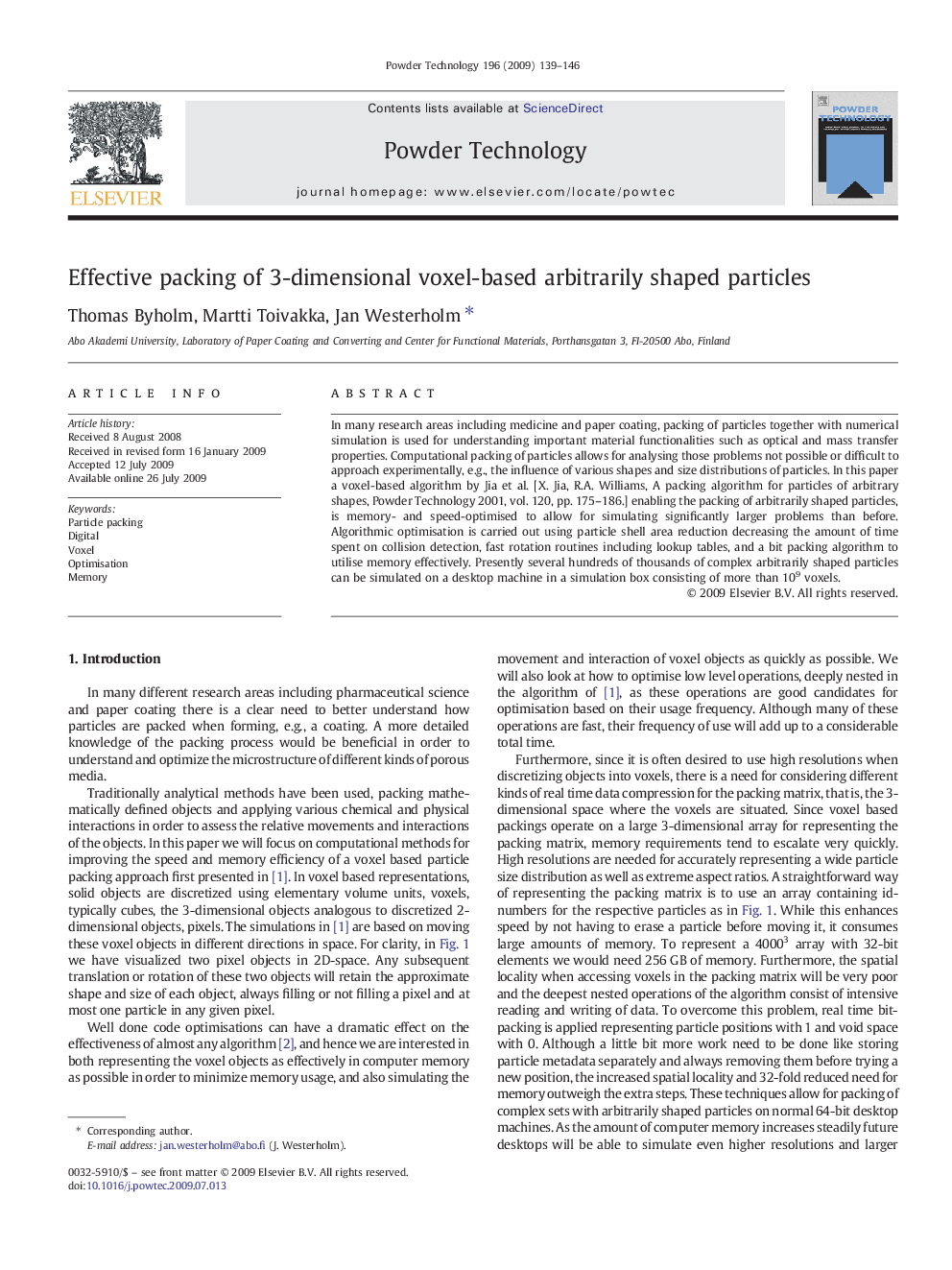| Article ID | Journal | Published Year | Pages | File Type |
|---|---|---|---|---|
| 238056 | Powder Technology | 2009 | 8 Pages |
In many research areas including medicine and paper coating, packing of particles together with numerical simulation is used for understanding important material functionalities such as optical and mass transfer properties. Computational packing of particles allows for analysing those problems not possible or difficult to approach experimentally, e.g., the influence of various shapes and size distributions of particles. In this paper a voxel-based algorithm by Jia et al. [X. Jia, R.A. Williams, A packing algorithm for particles of arbitrary shapes, Powder Technology 2001, vol. 120, pp. 175–186.] enabling the packing of arbitrarily shaped particles, is memory- and speed-optimised to allow for simulating significantly larger problems than before. Algorithmic optimisation is carried out using particle shell area reduction decreasing the amount of time spent on collision detection, fast rotation routines including lookup tables, and a bit packing algorithm to utilise memory effectively. Presently several hundreds of thousands of complex arbitrarily shaped particles can be simulated on a desktop machine in a simulation box consisting of more than 109 voxels.
Graphical abstractA voxel-based computational packing algorithm by X. Jia and R.A. Williams is memory- and speed-optimised allowing several hundreds of thousands of complex arbitrarily shaped particles to be simulated on a desktop machine. A sample case consists of concave cow-shaped particles.Figure optionsDownload full-size imageDownload as PowerPoint slide
